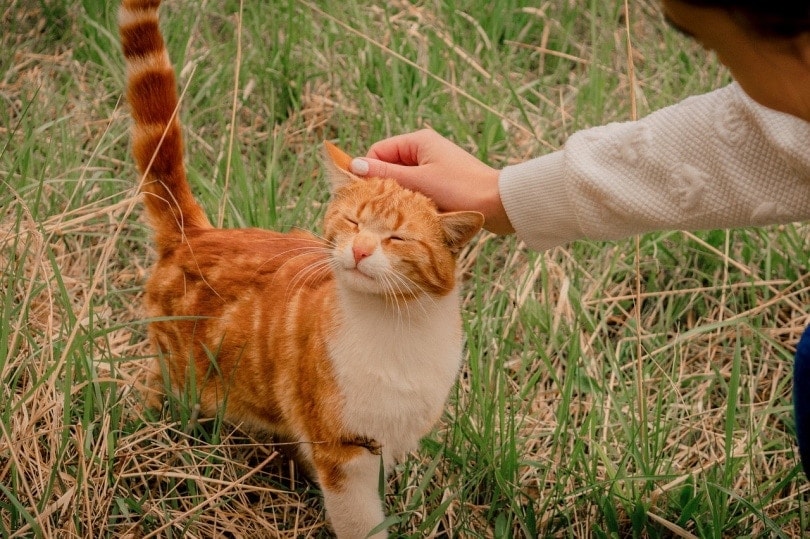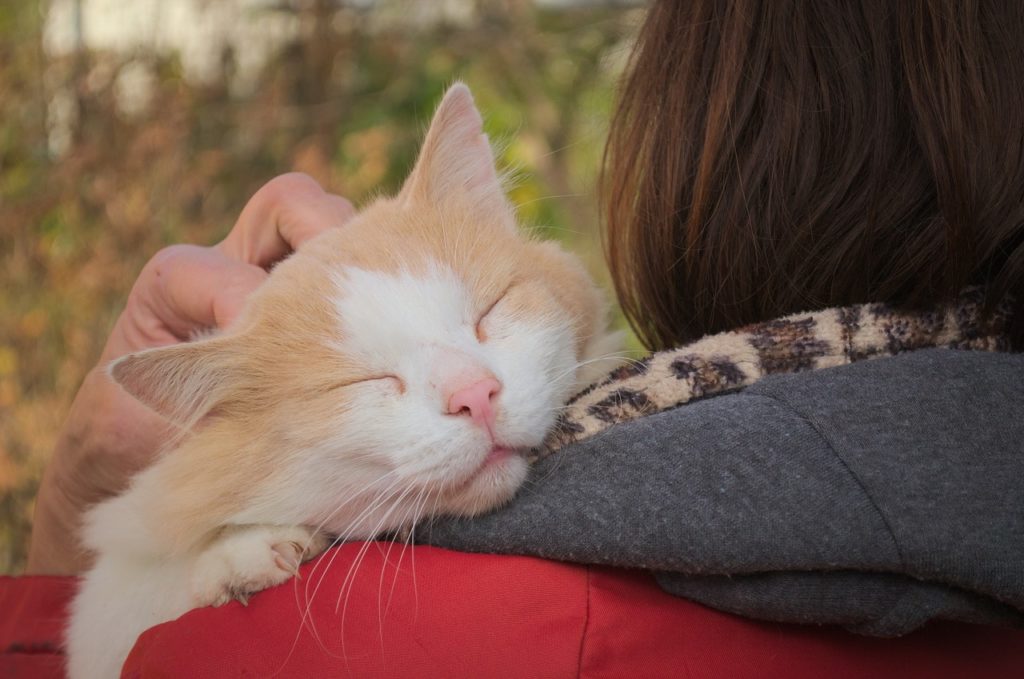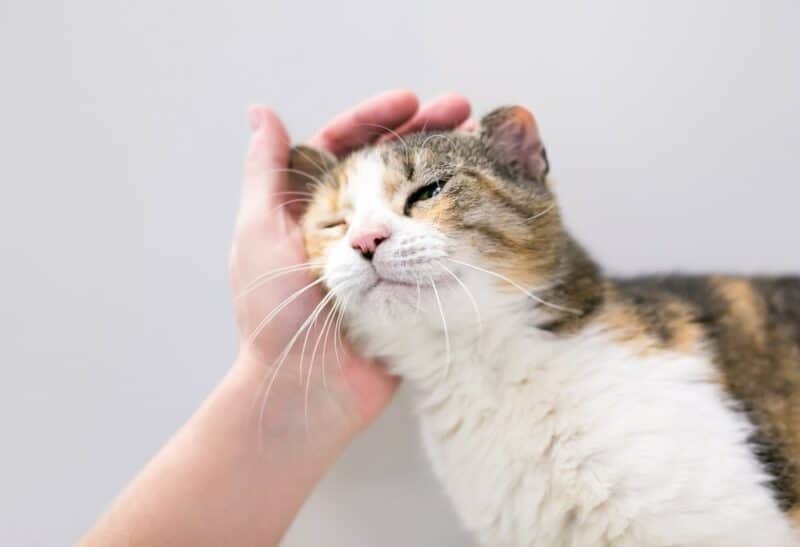When you pet your cat, you’ve likely noticed that they want more of it. But why is it that cats like it when you rub their ears, how can they tell you they like it, and what are some other areas they’ll enjoy you petting?
We’ll answer all those questions and more for you here. That way, you know exactly what to expect and can bond with your cat a bit more.
The 5 Possible Reasons Why Cats Like Their Ears Rubbed
1. It May Relax Them
There’s just something about them feeling your fingers rubbing their ears that puts your cat at ease, and while your cat likely doesn’t have a very stressful life, a little extra relaxation never hurts! Some cats may enjoy it enough to start purring, which may release endorphins that make them feel happy.
2. It Probably Feels Good
When you’re petting your cat’s ears, you may be hitting a spot they just can’t reach on their own that easily. Just like you probably enjoy a good back rub, it feels good for your cat when you’re scratching the area they can’t quite reach. However, cats are generally quite agile and can reach most parts of their body quite easily.
It’s not exactly a kitty massage, but it’s the next best thing. If your cat wants you to rub their ears, there’s a good chance it’s just because they like the way it feels.

3. They Want Your Attention
While some people think of cats as solitary creatures, this is rarely the case. Cats usually love and crave attention, and most cats will take any kind of positive attention you’re willing to give them. You spending time scratching their ears certainly counts as attention, and there’s a good chance they’re going to love it.
4. They’re Forming a Bond With You
Cats are not always solitary creatures, and many want to bond with their owners. You scratching their ears is one way they bond with you, and that alone is enough of a reason for them to enjoy it. Of course, there are other ways you can bond with your cat, but there’s a good chance this is their favorite.
5. They May Have an Ear Infection
Cats’ ears can get infected and inflamed, or they may develop scabs or even an abscess at the base of the ear. Cats find this itchy and irritating, and you rubbing their ears may reduce that itch. Inspect your cat’s ears for any sign of irritation, swelling, redness, discharge, scabs, or odor that may indicate an infection that needs veterinary treatment.

How to Tell if Your Cat Likes You Rubbing Their Ears
Just because most cats enjoy it when you rub their ears doesn’t mean it’s something you should take for granted. Some cats simply don’t enjoy it, but the good news is that cats are usually pretty good at communicating whether they like you rubbing their ears or not.
The most obvious way to tell if your cat likes you rubbing their ears is to see if they’re purring when you do it. If so, they probably like it and want you to keep going. Another sign that your cat is enjoying the ear rubbing is if they’re curling up onto your lap while you do it.
If you’re constantly chasing them around, they don’t like it, but if they’re staying in one place, it’s because they’re content and want more.
Finally, if a cat is constantly coming up to you and rubbing their head against you, and you typically respond by rubbing their ears, they like it! Them coming up to rub their head on you is a way for them to show affection, meaning they might even be asking for you to do it.
How to Tell if Your Cat Doesn’t Like You Rubbing Their Ears
Just like your cat will show you some clear signs if they like you rubbing their ears, they’re usually pretty good at communicating if they don’t like something. If your cat is acting any of these ways when you’re trying to pet their ears, they probably don’t like it, and you should consider petting them somewhere else and leaving their ears alone.
If your cat is growling or hissing, this is a clear sign they don’t like the behavior. Moreover, sometimes your cat will actively run away, try to hide, or even try to scratch or bite you. If they have previously enjoyed you rubbing their ear, it may be a sign the ear is painful or inflamed, so it’s best to get them checked out by your vet.
Other more subtle ways your cat might be telling you they don’t like the behavior is if they’re constantly turning their heads away from you, making it more difficult for you to pet their ears. You also might notice tail thrashing, flattened ears, twitching, or lots of shifting.

Other Areas Your Cat Might Want You to Pet
If your cat doesn’t like you petting their ears, that doesn’t mean you can’t pet them at all. There are several other areas where cats typically enjoy your attention, and we’ve highlighted some of their favorite areas for pets for you here.
One of their favorite areas for you to pet is right by their ears—right between them on the top of their head! Other areas on the head where cats usually enjoy pets include the side of their face, their neck, and under their chin.
But if your cat wants you to avoid their head entirely, there are a few other areas your cat might enjoy you petting. These areas include along the sides of their body, their back, and their shoulders. If your cat doesn’t seem to like you petting them at all, give them some space and time to warm up to you.
If they want you to pet them, they’ll come up to you when they’re comfortable, and this is when you can try to figure out where they would enjoy it most. But if they are suddenly more shy and dislike petting, while previously they have enjoyed it, this may be a sign of pain or an underlying illness, so take them to the vet for a check up.
Conclusion
Cats love your attention, so it’s no surprise that they like it when you take the time to rub their ears. Now you know why, and you can find more ways to connect with them in a way they enjoy. Whether it’s rubbing their ears, scratching their chin, or something else entirely, once your cat gets comfortable with you, they love spending time with you. You just need to figure out what part of it they enjoy the most.
Featured Image Credit: Mary Swift, Shutterstock
Contents
- The 5 Possible Reasons Why Cats Like Their Ears Rubbed
- 1. It May Relax Them
- 2. It Probably Feels Good
- 3. They Want Your Attention
- 4. They’re Forming a Bond With You
- 5. They May Have an Ear Infection
- How to Tell if Your Cat Likes You Rubbing Their Ears
- How to Tell if Your Cat Doesn’t Like You Rubbing Their Ears
- Other Areas Your Cat Might Want You to Pet
- Conclusion











